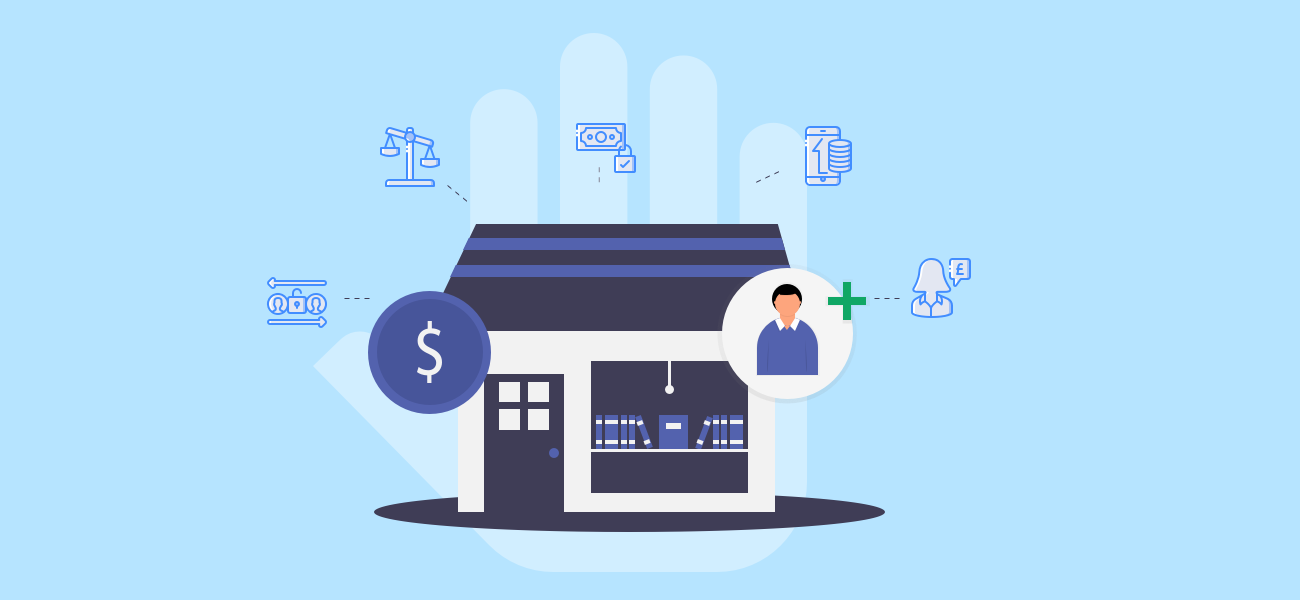High-Risk Merchant Account — What it is and How it Works

If you run an online business with a higher risk of chargebacks and want to process credit card transactions, you need a high-risk merchant account. But what is a high-risk merchant account and how do you know you need one?
To open a high-risk merchant account you need to find an acquiring bank that will underwrite your business. However, to increase your chances of getting an account it’s better to ask a reliable payment service provider for assistance.
But first things first.
What is a high-risk merchant account?
A high-risk merchant account is a payment processing account for businesses considered to be of high risk to the banks. As high-risk businesses are more prone to chargebacks, they come with the need for paying higher fees for merchant services.
If a business comes with a high potential of chargebacks, or the history shows many chargebacks and refunds, the bank may put a rolling reserve on your account. It’s the amount of money that will cover the possibility of chargebacks or fraud.
A rolling reserve can differ depending on the payment processor, and it’s usually 5-15%. The reserve is held for 6 months to one year, depending on the processing history.
Who needs a high-risk merchant account?
An example of high-risk businesses is the travel industry, as there are various factors there that can cause cancellations. This usually ends up with a number of refunds and customers who file chargebacks. Some others are gambling, forex trading, and adult-themed websites, to name a few.
The more chargebacks a business comes with, the higher the risk. Hence, the main factors that matter are industry reputation and processing history (your chargeback ratio should be lower than 0.9% of your total transactions).
So if you run a business in the industries mentioned above and similar, you need a high-risk merchant account to accept credit card payments on your website.
How do I apply for a high-risk merchant account?
To get a high-risk merchant account, you need to fill out an application online. Of course, to accept card payments you also need to find a reliable high-risk payment processor.
The process of applying for a high-risk merchant account is short and simple. For instance, if you choose SecurionPay as your payment partner, we will help you find a bank that matches your business needs. Once your business is approved by the acquiring bank, you can start processing payments online or mobile.
Here’s what you should prepare before you apply for a high-risk merchant account:
- Incorporation certificate
- shareholders’ certificate
- organizational structure chart (Shareholders)
- copy of your passport and utility bill of local directors and shareholders holding more than 15%
- incorporation certificate and shareholder certificate of other firms in case of being a shareholder
- processing history for the last 6 months (total volume, number of transactions, chargeback percentage)
- test user credentials with premium access to the platform
- the license number and name of the organization that issued the license (if you run a business that requires a license).
Plus, prepare your website based on website compliance requirements.
What’s next?
Get ready for due diligence run by risk management experts. They will decide whether your business qualifies for a high-risk merchant account. Your business will also be verified whether it’s on the TMF (terminated merchant file) list.
The credit card processing history is thoroughly reviewed according to the acceptable chargeback thresholds. So if your history is not good enough, contains incidents of fraud, or you lost your previous account due to a high chargeback ratio, you may have difficulties with getting a high-risk merchant account.
Keep in mind that payment platforms with years of expertise take the case by case approach, so there could be various factors that determine whether you’ll get a merchant account. It’s also based on the general evaluation and card network guidelines of compliance.
The pros and cons of a high-risk merchant account
One of the most common disadvantages of high-risk merchant accounts is that you need to pay higher fees and processing rates. It’s because of a higher risk. Also be aware that banks might request a reserve.
These are businesses with a higher chance of disputes, so it’s obvious that they come with stricter terms. However, when you accept payments through a reliable high-risk payment processor that keeps security at the forefront, you can rest assured that the risk of chargebacks and fraud will be minimized.
What to consider when looking for a high-risk merchant account
When you apply for a high-risk merchant account, remember that its terms might be stricter than those of a regular merchant account, so always read your contract thoroughly. Check for hidden or extra fees, rates, and how high is the rolling reserve.
Depending on the processor or acquirer, the risk is calculated differently, but it’s based on the bank’s underwriting guidelines.
The main factors that allow the acquiring bank to give you a high-risk merchant account are a history of chargebacks, the frequency of returns, industry reputation, or your credit score.
Finding a high-risk payment processor that will be a perfect fit for your company is never easy. Look for a payment platform that delivers top security level with a multilayered approach to effectively reduce suspicious activity and the number of false positives.
Final thoughts
As you can see, there are many reasons why your business can be considered a high risk. But if you set up a high-risk merchant account through a reliable payment platform, the process will be simplified without headaches.
Business & Finance Articles on Business 2 Community
(68)


